Tibet and Inner Mongolia. Ethnic furniture and regional specifications

Handmade, rustic and colourful furniture, always functional
Tibetans and Mongols, although very different, share many similarities, which result, at the very least, from adaptation to climate and isolation.
Nomadic or sedentary, these populations of farmers or breeders, lived in isolation a short time ago. Reclusive during the long winters, they devoted themselves to the manufacture of domestic furniture, the making of clothes, or the creation of small crafts.
Both nationalities used primitive tools, recycled wood and similar iconographic influences - all in common with their traditional furniture.
Domestic altars, cupboards, trunks and bedsteads were sometimes carved, decorated colourfully with abundant floral, Buddhist or geometric motifs, luminous, and patinated by time and use.
Rare, childlike and emotionally moving, they continue today to be transported on the back of mule or yak in remote places.
Some examples of Tibetan furniture
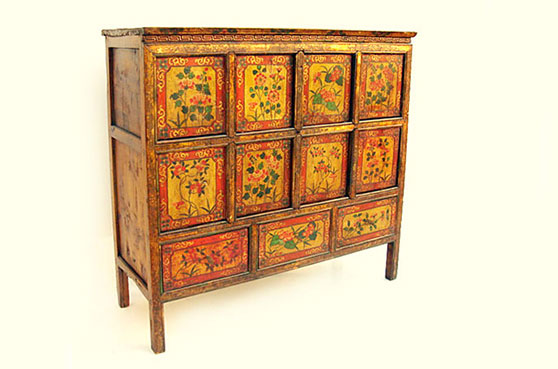
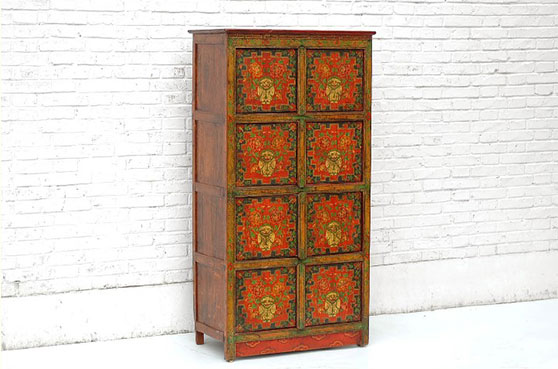
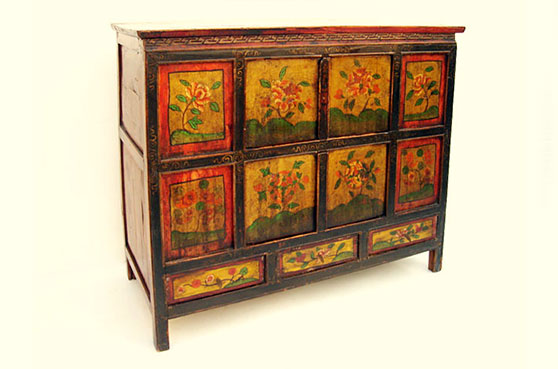
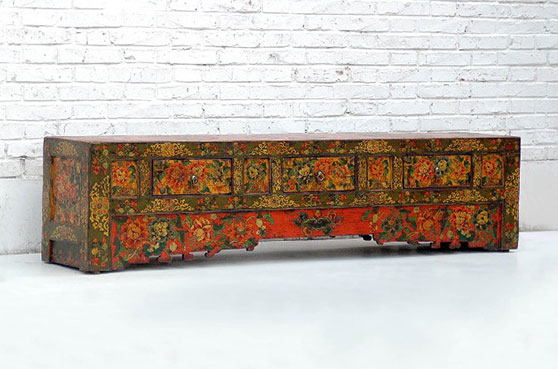
Some examples of Mongolian furniture
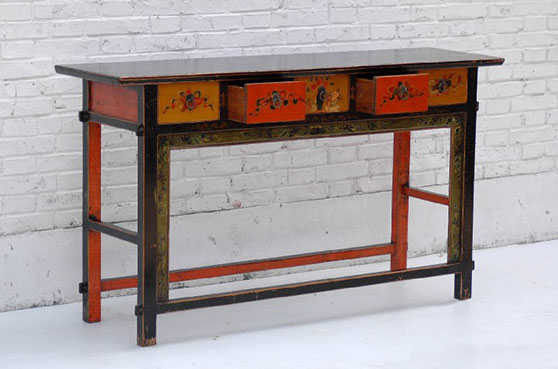
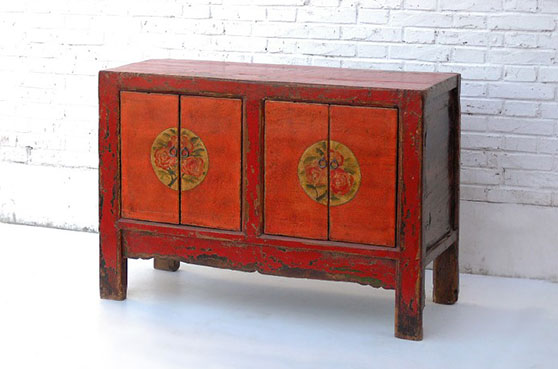

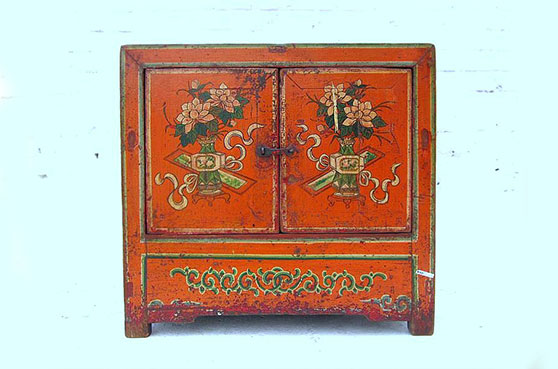
Tibet
Tibet, which Tibetans call "Bod", means “the land of fathers”. It is a strategic pathway between India, China and Mongolia.
Vast, but inhospitable, the highlands have maintained conflicting ties with their neighbouring country, China, from the beginning of our era.
Mining resources are important, but difficult to exploit. Tibet has a huge hydro potential, but its economy is still lagging behind, which makes it a relatively poor country.
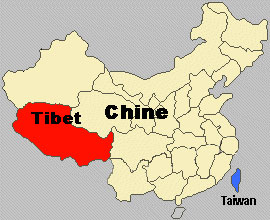
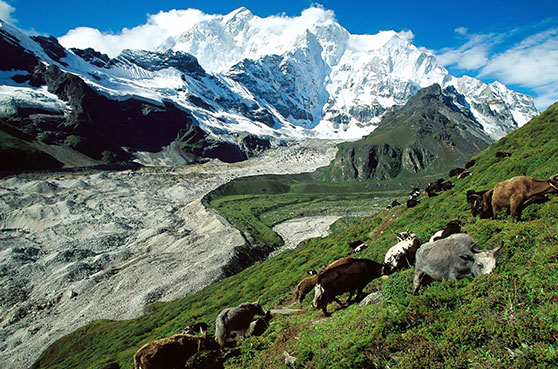
Geography
Tibet, called the Tibet Autonomous Region, is one of the five autonomous regions of China. It covers an immense area of 1,222,000 square km (474,300 square miles), and has a population of 13,000,000 people, living between 1,200 and 5,100 meters above sea level. The capital city of Tibet is Lhasa which is in the south-east of the country.
Located in the heart of Asia, north of the Himalayas, Tibet is the highest inhabited plateau on the planet. It is also known as "the roof of the world" due to its average altitude of 4,900 m. Dry and cold in the north, its climate softens in the eastern valleys, as well as in the south. Some of its peaks rise to an elevation of more than 8,000 meters - the most famous being Mount Everest, which is on the border between Tibet and Nepal.
A history with two sides. Some highlights
The history of Tibet is that of a people, who converted very early to Buddhism and favoured the quest for spirituality. It is said that there were as many lamas as valleys ...
Unfortunately, at certain times in history, the religious authorities have been kept away from political issues, which led to an inextricable situation.

9th Century. First Disagreement
Tibet was at the peak of its military power. Ferocious wars opposed its neighbour Uighur, which was allied with China and compromised Tibet’s unity.
In 823, King Trisug Detsen signed a formal peace treaty composed between China and Tibet which aimed to demarcate the respective borders between the two countries and ensured respect for the territorial integrity of each.
This treaty, which was interpreted differently by China and Tibet, marked the beginning of the disagreement.
Thirteenth Century. A Controversial Allegiance
Following the repeated assaults from the Mongols, Tibetans who were spiritually guided and unable to defend themselves, decided to pledge allegiance with the Mongol rulers.
Tibet was subdued to the Mongol Empire under Mongolian administrative rule, but when in 1271, Kublai Khan, a descendant of Genghis Khan, founded the Yuan Dynasty in China, Tibet came under Chinese rule.
This is disputed by Tibetan historians, who argue Tibet's sovereignty. According to them, China and Tibet were two separate entities within the Mongol empire in this agreement. As Kublai Khan also had converted to Buddhism, these were rather "Chöyön"-relations (“priest-patron” relations) between Tibetan spiritual leaders and Mongolian political warlords.
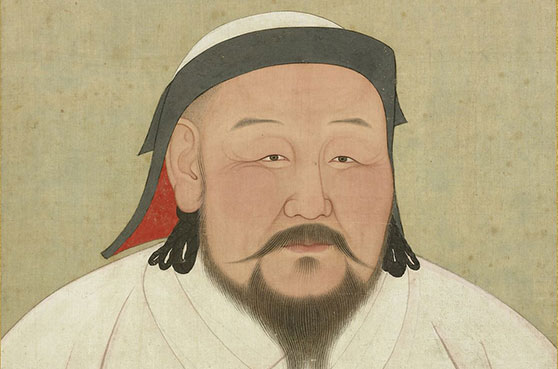
XVIe siècle. Le Tibet passe sous protectorat Mandchou
The Chinese Ming Dynasty, which imposed itself in China, was defeated, and the Mongols pushed back to the north.
Tibet was briefly under Manchu protectorate, but it retained its autonomy and its legislation, which was contested by China. China considered this protectorate as a proof of its sovereignty over Tibet.
When the Manchu dynasty fell, "liberated" Tibet was not aware of what the new threat posed by the colonial powers might have represented.
Early Nineteenth Century. The British Threat
While the British were settled in India, they considered Tibet an interesting commercial opportunity, as well as a gateway to China.
After several unsuccessful attempts with Lhasa, the British signed an agreement with China authorizing them to set up five trading companies in China and obtained passes to enter Tibet.
By signing this agreement, the English were the first to endorse an authority of China over Tibet.

Early 20th Century. The Lhasa Convention
England, Russia and China had their eyes on Tibet.
England had obtained permission from China to set up a trading company in Tibet, but it was afraid of being supplanted by the Russians. Taking the lead, British troops entered Lhasa on August 3, 1904. The Dalai Lama fled to Mongolia.
Being cornered, Tibet was forced to sign the Lhasa Convention. The convention was denounced by China, which declared that the British robbed its sovereignty over Tibet.
Chinese troops invaded eastern Tibet, but they did not have time to settle because the Qing dynasty collapsed.
The Dalai Lama returned to Tibet, where he expelled all foreigners, broke all links with China, and declared the independence of Tibet. But he failed to get this independence recognized by third countries.
Recent history
1914. Simla Accord, was a convention between Great Britain, China and Tibet. The British proposed that regions of Tibet be considered under Chinese "suzerainty" and no longer under its "sovereignty". This resolution was not signed as China rejected the accord.
1949. Tibetan leaders attempted to make an appeal to the United Nations in order to recognize the independence of their country. They received no support.
1950. The Chinese People's Liberation Army entered and took control of eastern Tibet, overwhelming the poorly equipped Tibetan troops.
May 23, 1951. Delegates of the Dalai Lama signed the seventeen-point agreement for the peaceful liberation of Tibet in Beijing, under the threat that the People's Liberation Army might continue advancing.
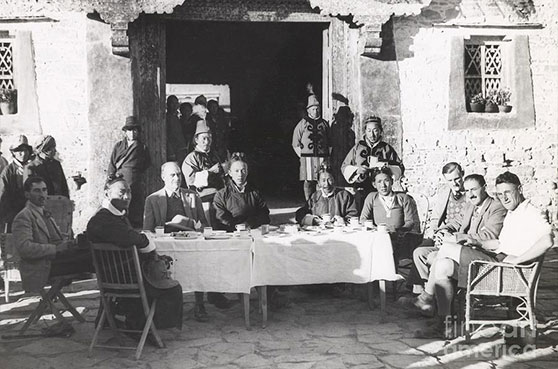
The 1956 Exile of the Dalai Lama
Following the collectivization that deprived large monasteries and thousands of peasants of land, an armed revolt broke out in Litang against the Chinese administration. This armed revolt was severely repressed by the Chinese government. The number of Tibetan victims was generally estimated to have been tens of thousands of people.
The Dalai Lama then fled from Tibet to seek refuge in India, followed by about 100,000 Tibetans.
Claims, disturbances, rebellions, arrests, executions, and even immolations were an endless and sad litany, which exacerbated in some a desperate nationalism, the exiles in particular.

Economy
The water of Tibet may prove to be one of its most important resources.Tibet’s rivers, whose sources lie on the Tibetan Plateau which is a storehouse of freshwater, so bountiful that the region serves as the headwaters for many of Asia’s largest rivers, including the Yangtze, Yellow River, Mekong, Indus, Brahmaputra, Salween, Irrawaddy and Sutlej, among others – in addition to two tributaries of the Ganges, Gandaki and Ghaghara.
The hydroelectric and hydropower potential is enormous, which almost makes Tibet a water tower of Asia. This precious resource may be appealing to China and India.
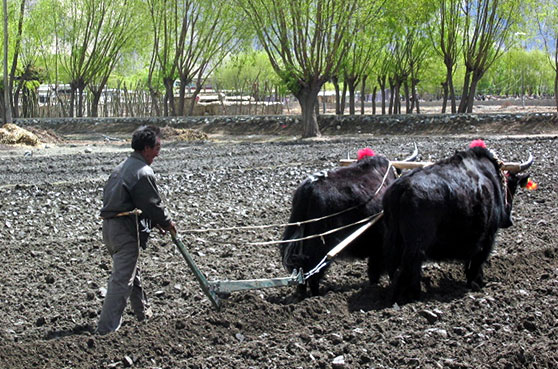
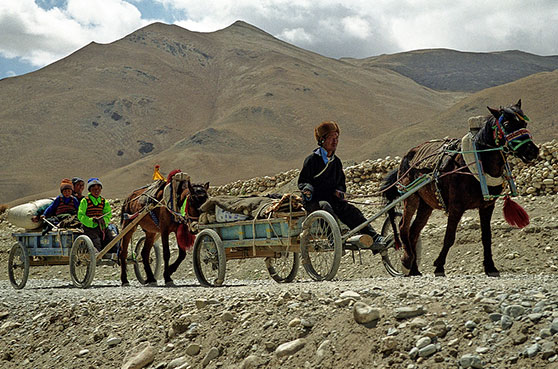
Although Tibet is rich in mineral resources, its economy has remained underdeveloped. Tibet also has mineral resources, which are not all exploitable, and poorly exploited in any case. These resources include bauxite, tin, arsenic, coal, jade, sapphire, quartz, chromium, copper, borax, uranium, lithium, iron, gold, silver, lead, zinc, cobalt, as well as oil and gas deposits.
Due to limited arable land, the primary and traditional occupation in Tibet is livestock farming.
Population
The total Tibetan population is about 8.5 million.
6.3 million Tibetans live in the People's Republic of China and belong to one of the 56 officially recognized ethnic groups. 2,716,400 members live in the Autonomous Region, and they represent 91% of the TAR population.
In addition to populating Tibet, there are also about 2 million Tibetans living in India, Nepal, Bhutan and Pakistan, as well as about 150,000 to 200,000 refugees mainly living in neighbouring countries (India, Nepal, Bhutan), in Europe and North America.
Most Tibetans practice Tibetan Buddhism.
Tibetan culture is strongly inspired by Buddhism.
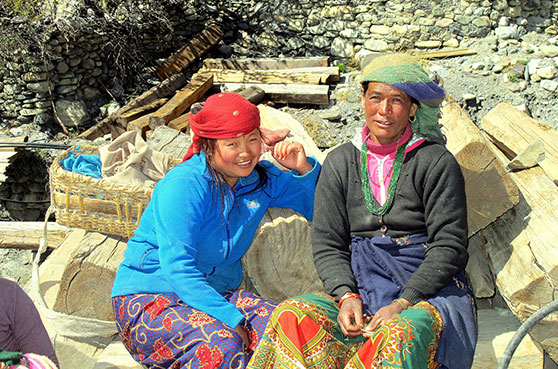
Religion
Tibet has adopted Tantric Buddhism.
Tibetan Buddhism has four main schools: the "Nyingmapa", "Kagyüpa" and "Sakyapa", also known as Red Hats. Another school is the Yellow Hats "Gelugpa", which the Dalai Lama belongs to.
The Dalai Lama is the religious authority who represents all Tibetan Buddhists, he was also the traditional political leader of the theocracy.
Since 1959, he has presided over the government in exile.
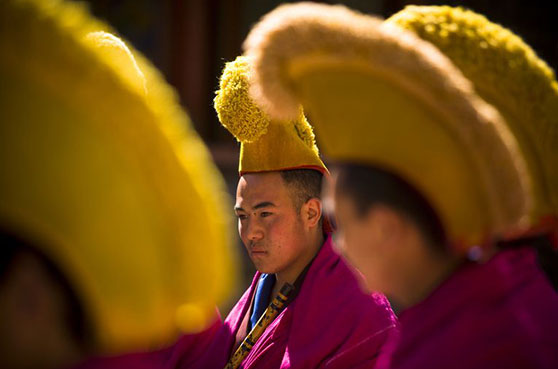
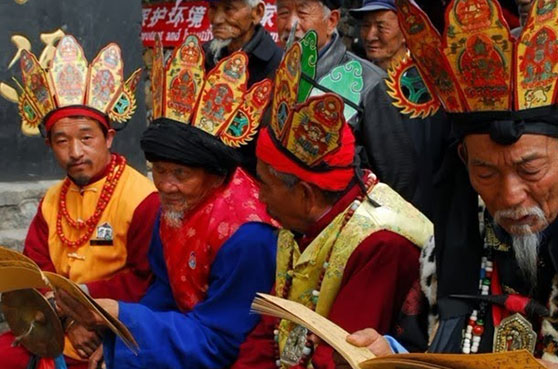
Bön, another pre-buddhic and shamanic belief system of Tibet, was initially the religion in which Buddha’s teachings were antithetical. Then, it was more or less aggregated with Tibetan Buddhism, which it also influenced. It also influenced the Nyingmapa school in particular.
China's intervention in Tibetan affairs has profoundly changed the religious practices. The Chinese authorities intend to leave religion as merely a substitute for political and social life.
Languages
The official languages are Tibetan and Chinese.
Tibetan, which is subdivided into a large number of dialects, belongs to the family of Tibetan-Burmese languages.
Tibetan, is noted by means of an alphasyllabary, which, according to tradition, was created from Brahmi in the seventh century by a minister of King Songsten Gampo. It is a language spoken by several million people, including the Tibet Autonomous Region, Qinhai, Gansu, Sichuan, Yunan, Ladakh, Bhutan and northern Nepal.
As a classical language of Upper Asia’s Buddhism, Tibetan has been the driving force behind rich literature since the eighth century.

Worth seeing. Worth discovering :
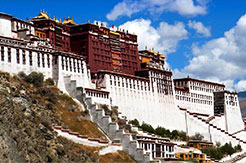
Located in the northwest of Lhasa.
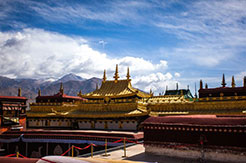
Built in the 7th century and located in the heart of Lhasa.
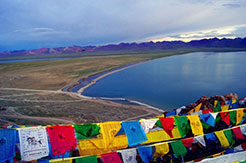
It is located between the Damxung and the Bango counties.
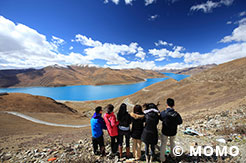
Located in the district of Nangartsê County, it is one of the three sacred lakes of Tibet.
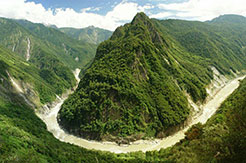
Considered the world’s deepest canyon.
Inner Mongolia
Inner Mongolia is one of the five autonomous regions of the Chinese People's Republic. Located in the north of China, this long strip of more than one million square km, which is more or less twice as big as France, has only 25.000.000 inhabitants. Its capital is Hohhot.
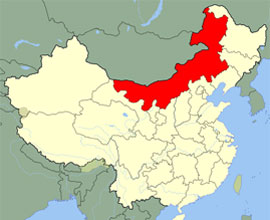
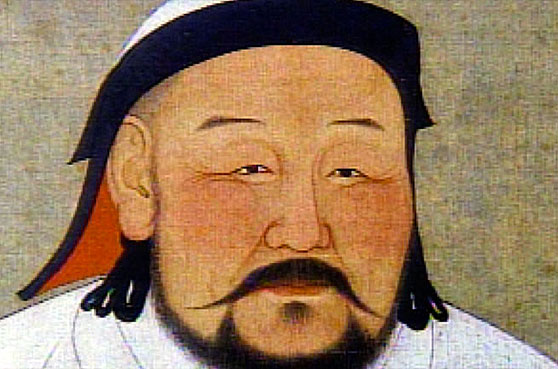
History
The history of Mongolia remains dominated by the mythical stature of Genghis Khan, who united hordes of nomadic tribes under his banner, blazed a trail of blood and fury from the Pacific Ocean to the heart of Europe, the largest empire that the earth had ever known in the thirteenth century.
It should be noted that the Mongolian steppes were also the cradle of the Huns and their leader Attila, who spread terror within Christianity.
The Golden Age
According to known texts, Mongolia was ruled by the Uyghurs, a group of Turkish people, in the seventh century.
In the 13th century, Genghis Khan, a legendary conqueror, succeeded in building and unifying a vast empire, which, after the death of his grandson Kublai Khan - founder of the Yuan Dynasty – became the largest contiguous empire in history. At its height, the empire encompassed an area that spanned from present-day Beijing to Moscow.
Mongolia was at its peak where it would stay for just over two centuries, despite a fratricidal war between the heirs of Genghis Khān and the Mongol factions submitted to the Ming people.
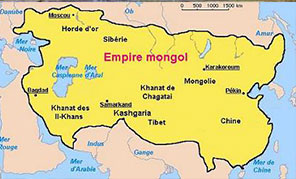
Three centuries under Manchu domination
At the beginning of the 17th century, the Manchus, an ethnic group from northeastern China, allied themselves with the Mongols to supplant the Ming Dynasty, and in turn established themselves by founding the Qing Dynasty (1644-1911).
Having become powerful, they practiced a policy of forced assimilation of the tribes of present-day Inner Mongolia.
Faced with difficulties - foreign aggression, opium war, Russian advances, peasant revolts - the Qing offered land to peasants. As a result, there was a two-speed colonization, which disadvantaged the Mongolian populations and benefited the Chinese.

Inner Mongolia became "autonomous"
While in 1912, Outer Mongolia, supported by Russia, acquired its independence, the southern tribes remained attached to the Chinese state.
In 1937, to avoid involvement in the Chinese-Japanese war, the southern tribes declared their independence and became somewhat of a Japanese colony. Although, on August 4, 1941, in order to channel Mongolian nationalism and support Japanese ambitions, they were named the "Autonomous Federation of Mongolia".
Mongolia became the Chinese Autonomous Region
In May 1947, the Chinese provinces allied themselves with the Chinese Communists and became the Inner Mongolia Autonomous Region. The Mongols were assured that they would remain masters of their decisions and keep their language.
But in 1949, the constitutional monarchy established by the Mongols was overthrown by the People's Liberation Army. The Buddhist temples and monasteries were closed, the big owners expropriated or requisitioned.
The traditional Mongolian lifestyle struggled to maintain its existence.

Geography
The climate is continental. The winters in Inner Mongolia are very long, with cold temperatures ranging from minus 10 ° C to minus 20 ° C, even minus 30 ° C in the far north-east.
Most of Inner Mongolia consists of desert areas, highlands, and the central Yinshan and Helan mountain ranges west of the Yellow River.
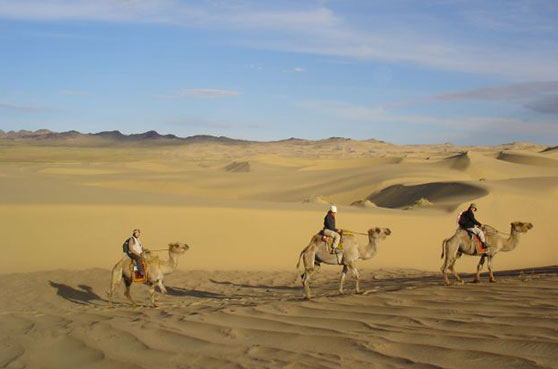
Economy
Farming of cereal crops takes precedence along the river valleys. In the more arid grasslands, herding of goats, sheep, cattle, horses, yaks, reindeer and camels. Along with forestry and hunting they constitute the bulk of the traditional economy.
Inner Mongolia has abundance of natural resources which are rather inefficiently exploited and utilised, such as the largest rare-earth mine in the world. It also has significant deposits of naturally occurring niobium, zirconium and beryllium as well as important coal mines.
Industry is developing mainly around hydraulic, chemical and metallurgical energy, and coal and cashmere wool.
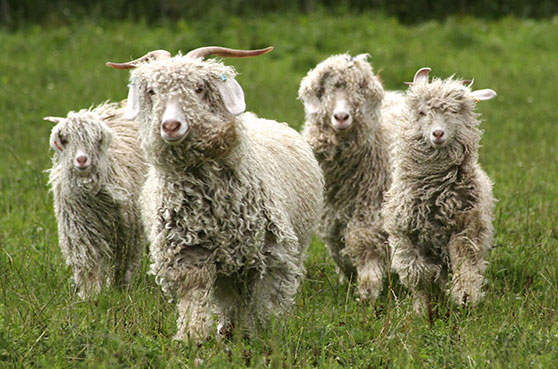
Language
The Han Chinese represent 80% of the population, which was not the case about thirty years ago. They speak a variety of dialects, including the Jin, and they are usually found living in the cities.
Mongols in Inner Mongolia speak Mongolian dialects such as Buryat, Oirat, Chakhar, Baarin or Ordos, which are close to Turkish languages.
Other ethnic groups are the Daur, Evenks, Hui, Manchus and Koreans.
By law, all street signs, commercial outlets, and government documents must be bilingual - written in both Mongolian and Chinese.
Young Mongolians speak Chinese, and Mongolian has started losing importance in urban areas, but this is not the case in rural areas.
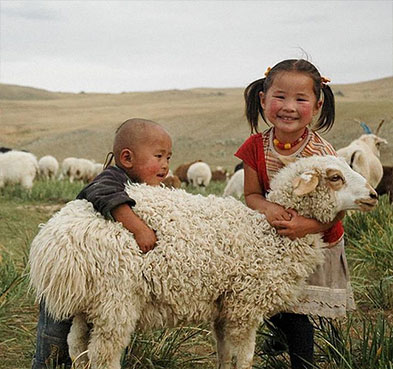
Worth seeing. Worth discovering :

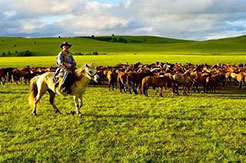
Close to Beijing.

Ordos.

The capital city.
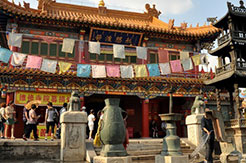
Built in 1580.

